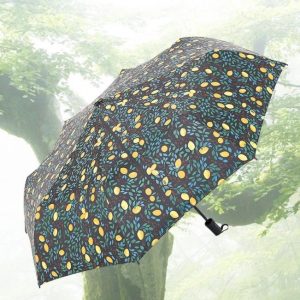The history of umbrellas is a fascinating journey that dates back thousands of years. From their origins as parasols to their evolution into rain shields, umbrellas have played diverse roles throughout history. Here’s a brief overview of their transformation:
- Parasols in Ancient Civilizations: The concept of using umbrellas as sunshades, or parasols, dates back to ancient civilizations. Early records show that parasols were used in ancient Egypt, Assyria, Greece, and China. These parasols were typically made from materials like palm leaves, feathers, or silk attached to a wooden or bamboo frame.
- Ancient Rome and Greece: In ancient Rome and Greece, parasols were considered a symbol of luxury and status. They were often used by women to protect themselves from the sun while walking outdoors.
- Spread Across the World: The use of parasols spread across Asia and the Middle East over time, becoming an essential accessory for protection from the sun’s rays.
- Umbrellas in Asia: In China, umbrellas evolved from being primarily used as parasols to protect against rain. The design of these early rain umbrellas featured oiled paper or silk canopies and bamboo frames.
- Introduction to Europe: The umbrella was introduced to Europe in the 16th century, likely through trade and cultural exchange with Asia and the Middle East. Initially, they were primarily used by women as fashion accessories, but they gradually gained popularity as rain shields.
- Waterproofing Innovations: In the 18th century, advancements in waterproofing materials, such as wax and oil, were made in Europe. This led to the production of more effective rain umbrellas.
- Samuel Fox’s Invention: In the mid-19th century, Samuel Fox, an English engineer and industrialist, patented the modern steel-ribbed umbrella in 1852. This innovation used flexible steel ribs to support the canopy, making umbrellas more durable and wind-resistant.
- Collapsible Umbrellas: In the late 19th and early 20th centuries, inventors like Hans Haupt and Bradford E. Phillips introduced collapsible or folding umbrellas, making them more portable and easy to carry.
- Umbrellas in Modern Times: Today, umbrellas are an integral part of daily life, providing protection from both rain and sun. They come in various shapes, sizes, and materials, catering to different needs and preferences.
- Innovations in Design and Technology: In recent times, there have been several innovations in umbrella design, including wind-resistant umbrellas, automatic open and close mechanisms, UV-protective fabrics, and eco-friendly materials.
The umbrella’s history from a simple sunshade to a versatile rain shield showcases its cultural significance, practicality, and enduring appeal throughout the ages. From ancient civilizations to modern societies, umbrellas have evolved into essential accessories that combine form and function, protecting us from the elements in style.








